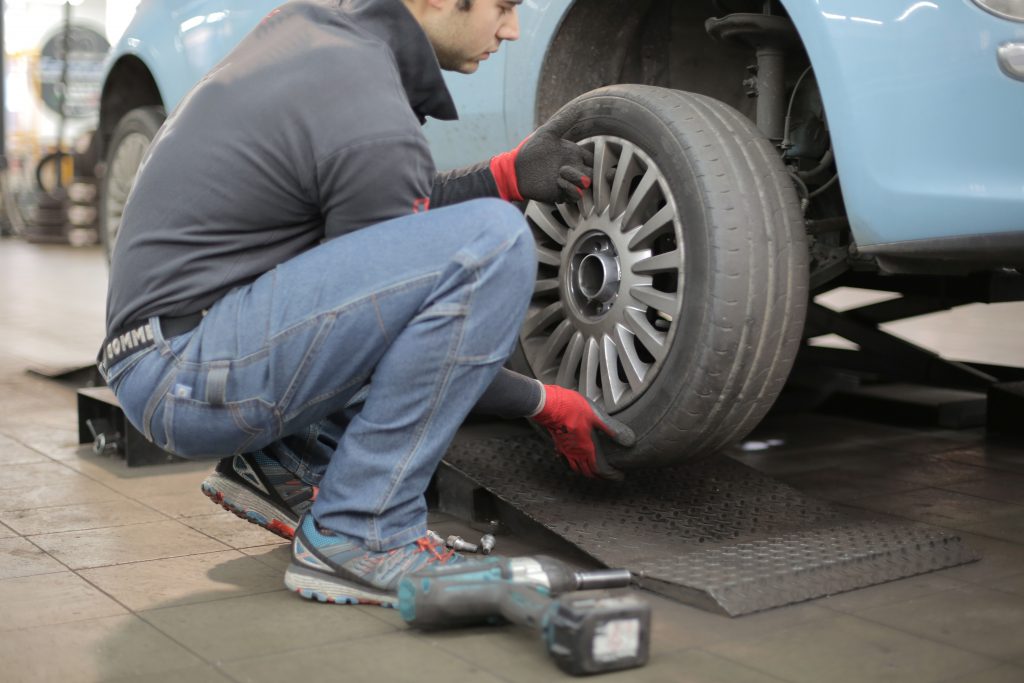Car Leasing
- Personal Car Leasing
- Business Car Leasing
- Electric Car Leasing
- Hybrid Car Leasing
- Popular Lease Deals
- In Stock Deals
- Top Cars Manufacturers
Van Leasing
- Personal Van Leasing
- Business Van Leasing
- Electric Van Leasing
- Hybrid Van Leasing
- Petrol & Diesel Van Leasing
- In Stock Deals
- Top Vans Manufacturers
Services
- Motoring Services
- Compare Car Insurance
- Compare Van Insurance
- Compare Home Charge Points
- Check Your Credit Score
- Gap Insurance
- Repair Your Vehicle
- Sell Your Vehicle
Leasing Help
- Motoring Services
- About Us
- Leasing FAQs
- News & Leasing Guides
Fair Wear and Tear During Leasing - Explained

Fair wear and tear is important whenever we talk about leased cars. This is as their condition undergoes some form of decline after having been used by the drivers. Damaging a leased car does mean that you have to pay some sort of penalty when returning it.
However, you don’t have to pay for fair wear and tear, according to the BVRLA. This is because this is the expected outcome after a vehicle has been in use for the lease period. You should know that there are a couple of guidelines for what is actually covered here.
The following is all you need to know about fair wear and tear for leased cars:
Fair wear and tear meaning
Wear and tear is a common term used to denote any forms of deterioration that occurs during an item’s usage. If we look at cars, most of their components are specifically designed for long-term use. But what is the fair wear and tear definition?
Well, according to the Fair Wear and Tear Act in the UK, it is limited to the “reasonable use of the premises by the tenant (the car lessee in this case) and the ordinary operation of natural forces.”
The British Vehicle Rental and Leasing Association (BVRLA) defines it as “when normal usage causes deterioration to a vehicle”. This means that it is the amount of damage that you can expect from normal ownership habits.
Hence, any form of excess damage to the car due to carelessness isn’t covered. As a result, any sort of deterioration from accidents, or overloading the vehicle will cost you when the lease term is over. Although less pricey, this is similar to the penalties when ending a car lease early.
Examples of fair wear and tear
People often tend to be more careful with leased vehicles as they’re afraid of being penalized for the damage. It should be known that there are some imperfections, which are acceptable to lease providers. They are the following:
- Light scratches on the lights, the windscreen, or the wheels
- Modest tyre wear; car should still be legal to drive on British roads based on the tyres’ condition
- Slight stains on the upholstery, but without any tears
Chips, dents, deep scratches, and any sort of damage incurred from hitting the car are not passable, unfortunately. That being said, different lease deals can have their own criteria for judging this sort of thing. Hence, it is imperative that you read about what’s acceptable on your lease contract.
BVRLA guidelines
The aforementioned section gives you an idea of what fair wear and tear is. If your car lease provider is going to assess the condition of the car via the BVRLA fair wear and tear guide, there are three possible options here, based on the type of vehicle you have. The BVRLA has guides for cars, light commercial vehicles, and heavy commercial vehicles; all of them leased.
Penalty for exceeding fair wear and tear
Using a leased vehicle roughly and damaging it beyond what’s acceptable to the lease provider can be a pricey affair when the lease term is over. According to Nationwide Vehicle Contracts, the average penalty in 2020 was 326 GBP.
Lease car maintenance
The best way to save yourself from these charges is to take good care of the leased car. This doesn’t just mean keeping it clean and free from any dents, but it also means following the manufacturer’s recommendations for maintenance and usage.
Also, it is best that you have the car inspected for the damage a week or two before the lease term ends. You need to make sure that it is in the best condition to save you from any heavy lease penalties.
Find Car Leasing Special Offers – Auto Lease Compare
If you think leasing is for you, check out Auto Lease Compare to get the best car lease deal for yourself. Choose from our best leasing options and get lower monthly payments which can save you thousands.
Check out car lease deals and our EV car lease deals.
To know if leasing a car affects your mortgage, click here.
To find out which car lease deal is the best for you, check out our car leasing comparison tool.
Other Services

Looking to sell your vehicle?

Getting a new lease and need to sell your old vehicle?
Click here for a fast and FREE solutionCheck your Credit Report

1 in 3 credit reports contain errors which can negatively impact your score and stop you being accepted for your new vehicle. This is not a mandatory step, but we recommend getting a FREE* copy of your report from our partner UK Credit Ratings.
Need to repair your existing vehicle?
DWV is one of the largest specialist mobile SMART, dent removal and alloy wheel repairers in the UK. If you need minor paint scratches, scuffs, chips, dents or alloy wheels repairing - they can fix your vehicle directly at your home or office with competitive pricing.
Local car leasing deals
Auto Lease Compare Ltd trading as AutoLease.Compare is authorised and regulated by the Financial Conduct Authority: 822040. We act as a credit broker not a lender. We can introduce you to a limited number of brokers and we may receive a commission payment from the broker if you decide to enter into an agreement through them.
Auto Lease Compare Ltd - Registered in England and Wales. Company number: 11519767. Data Protection Registration number: ZA469390. VAT Number: 307521233.
Registered Office Address: AutoLease.Compare Ltd, 10 Waterson Street, London, E2 8HL